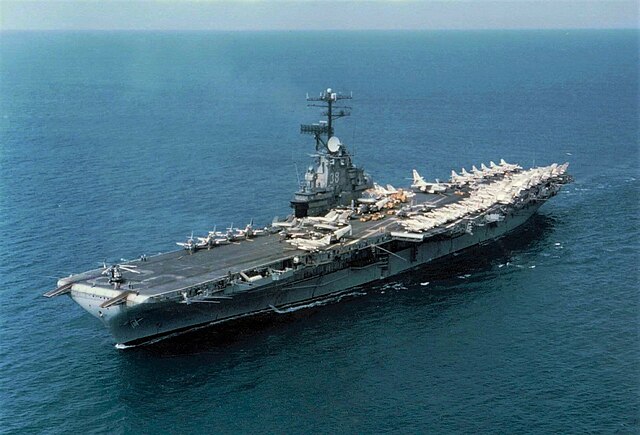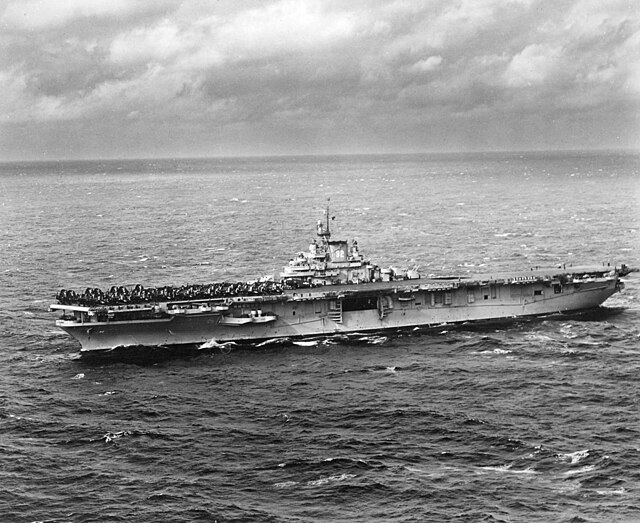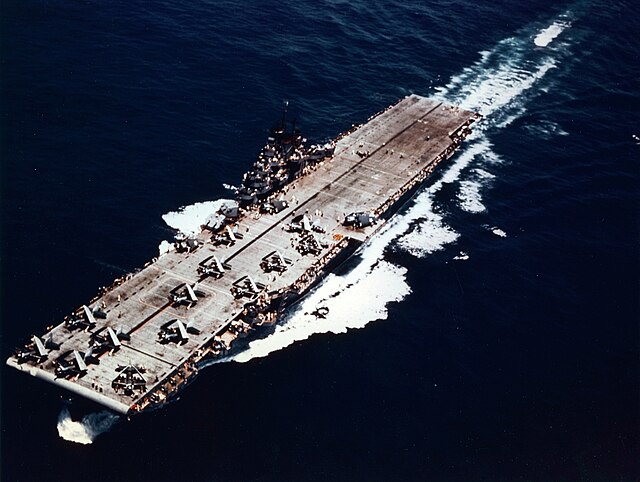USS Shangri-La (CV/CVA/CVS-38) was one of 24 Essex-class aircraft carriers completed during or shortly after World War II for the United States Navy.
USS Shangri-La underway with crew on parade, 17 August 1946
Mrs. James H. Doolittle christens Shangri-La at the Norfolk Navy Yard, Virginia, 24 February 1944
Shangri-La after her SCB-125 refit in 1956
Shangri-La in 1970 on her last deployment
Essex-class aircraft carrier
The Essex class is a retired class of aircraft carriers of the United States Navy. The 20th century's most numerous class of capital ship, the class consisted of 24 vessels, which came in "short-hull" and "long-hull" versions. Thirty-two ships were ordered, but as World War II wound down, six were canceled before construction, and two were canceled after construction had begun. Fourteen saw combat during World War II. None were lost to enemy action, though several sustained crippling damage due to kamikaze attacks. Essex-class carriers were the backbone of the U.S. Navy from mid-1943 and, with the three Midway-class carriers added just after the war, continued to be the heart of U.S. naval strength until supercarriers joined the fleet in the 1950s, 1960s and 1970s. Several of the carriers were rebuilt to handle heavier and faster aircraft of the early jet age, and some served until well after the Vietnam War. Of the 24 ships in the class, four of the carriers: Yorktown, Hornet, Lexington, and Intrepid, have been preserved as museum ships.

USS Philippine Sea (CVA-47) underway in 1955
1941 design plans for the Essex class.
Leyte underway in 1948
Yorktown at sea in 1943








